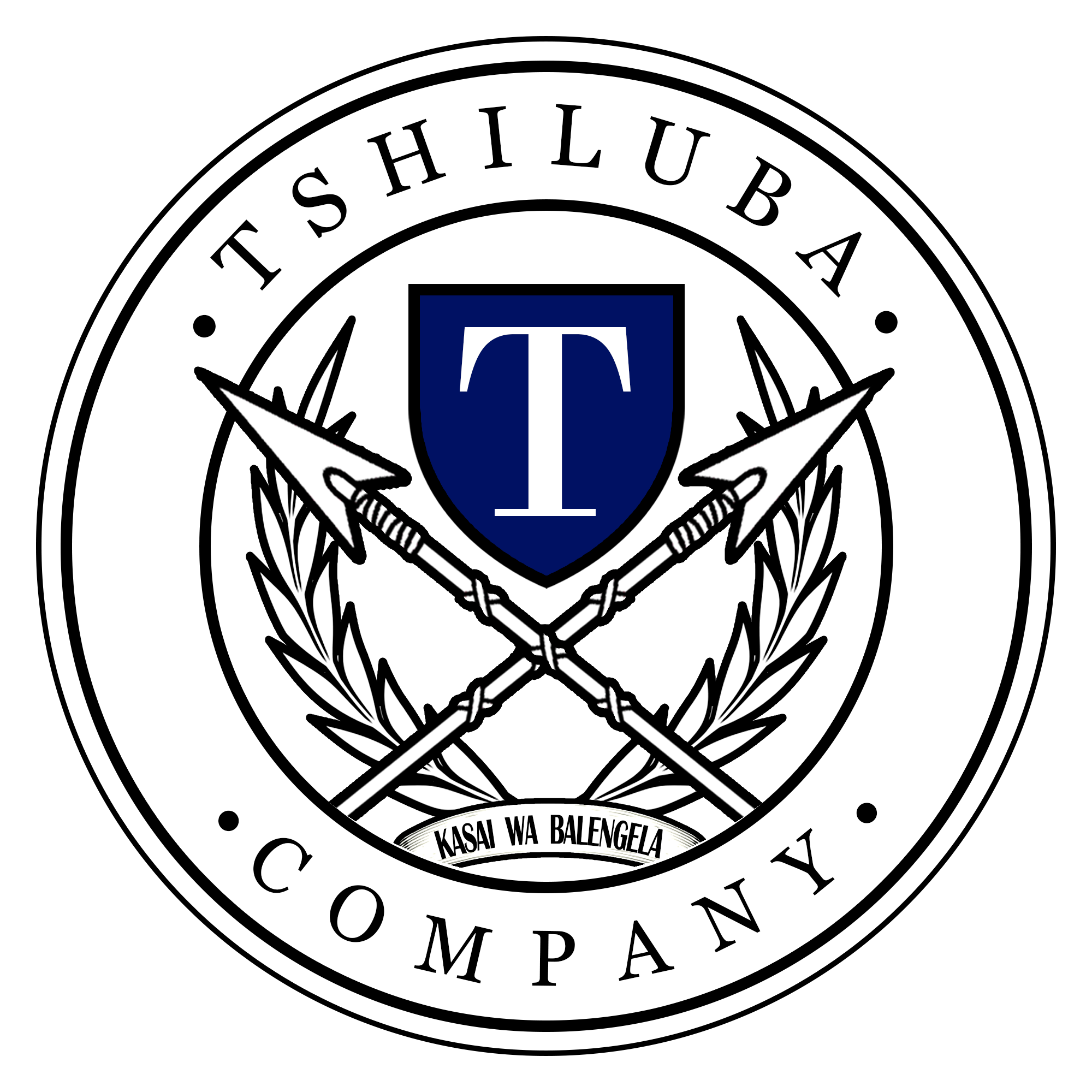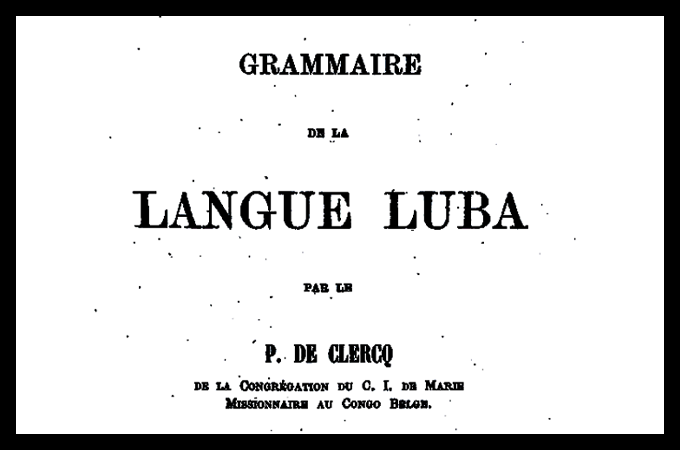Blog > Grammar > Exploring The Noun Class System in Tshiluba

Exploring the Noun Class System in Tshiluba: A Detailed Examination
There are a total of eight noun classes in Tshiluba. It is a fundamental necessity for anyone who aspires to gain literary tshiluba mastery to learn the noun classes of Tshiluba and their particularities.
Lire En Français
 Credit: Grammaire de la Langue Luba - Auguste de Clercq (1903)
Credit: Grammaire de la Langue Luba - Auguste de Clercq (1903)
The study of Tshiluba is a practice largely unknown in the western world. Much of Luba literature is yet to be discovered, as the Luba have orally passed down Tshiluba, its history, and culture. Much of the basis of written Tshiluba was formed in the late 1800's and early 1900's by Belgian & American missionaries who dedicated much of their life to the discovery of bantu languages. One of the earliest, and probably the first author of written Tshiluba was Auguste de Clercq (1870-1939). From their observations, we may begin to build what is necessary to form a basic understanding of literary Tshiluba.
It must be understood that literature is an important tool for the study of languages, and that oral learning alone will not optimize ones ability to grasp the complexities of Tshiluba. Literary texts often adhere to grammatical rules and proper syntax, providing learners with structured examples of sentence construction, verb conjugation, and grammatical usage. Analyzing these aspects within a literary context helps reinforce grammatical understanding.
The Prefix Game
In order to begin to build an understanding of noun classes in Tshiluba, it will be necessary to grasp the idea that Tshiluba is a prefixial language. This means that Tshiluba is a language that heavily relies on prefixes—affixes added to the beginning of words—to convey grammatical information, such as tense, aspect, mood, number, or case. The use of prefixes is a fundamental aspect Tshiluba grammar and morphology.
These prefixes often carry specific meanings or indicate certain grammatical categories, and they are added to root words to create new words or to modify the meaning of existing words. There also exist suffixes in Tshiluba which add additional detail to actions, words, tense, and aspects. Contrary to what may be believed, Tshiluba is a very complex and sophisticated language, following strict grammatical rules.
In Tshiluba, most words will consist of three parts: a prefix, a stem, and a suffix. For example, leader in Tshiluba is mulombodi. The three parts are mu-, -lombo-, and -di. The word mulombodi is derived from the verb meaning "to guide" which is kulombola, while the stem is -lombola. Before listing the different prefixial noun classes, here are some examples of words in Tshiluba which employ different prefixes.
| Singular |
|---|
| mu-ntu, a person tshi-ntu, a thing di-su, an eye di-konda, a plantain lu-zadi, a fingernail |
| Plural |
|---|
| ba-ntu, people bi-ntu, things me-su, eyes ma-konda, plantains ka-zadi, a small fingernail |
The Eight Noun Classes
Singular nouns and plural nouns use different prefixes; thus, each class employs two prefixes. In class I, the singular word for "person" is muntu, and the plural word "people" is bantu; hence, the mu-ba class. Here is a table listing the eight noun classes in Tshiluba.
| The 8 Prefixes (singular-plural) |
|---|
Class 1. mu-baClass 2. mu-miClass 3. bu-maClass 4. di-maClass 5. lu-nClass 6. n-nClass 7. ka-tuClass 8. tshi-bi |
Through observation and study, most words in Tshiluba can be categorized into one of these eight noun classes. There are very few exceptions. Each of these classes are to be studied and observed in greater detail.
Class I. mu-ba
This class contains the names of: people and human agents.
muntu: a person. bantu: people.
mukaji: a woman. bakaji: women.
muana: a child. bana: children.
mulume: a man. balume: men.
mupika: a slave. bapika: slaves.
Class II. mu-mi
This class contains the names of:
a. animals
b. inanimate agents
c. instruments
d. human or animal body parts
mutu: a head. mitu: heads.
mufuba: a bone. mifuba: bones.
munu: a finger. minu: fingers.
mutshi: a tree. mitshi: trees.
musulu: a river. misulu: rivers.
Class III. bu-ma
This class contains the names of:
a. abstract names denoting nature, character or state. These words usually remain exclusively in singular form, omitting the plural usage altogether.
b. products
c. instruments
d. places
budimi: a field. madimi: fields.
bulalu: a bed. malalu: beds.
bungungu: soot. mangungu: soots.
bukole: strength.
bujitu: weight.
butoke: whiteness.
bufike: blackness.
Class IV. di-ma
This class contains the names of:
a. names of endearments
b. names of adherent, fixed things;
c. names of coherent, extended things;
d. names of liquids. These are always in the plural, because taken in the singular with the prefix 'di', they indicate a certain quantity of the whole, a certain part detached from the mass.
dibue: a stone. mabue: stones.
dikasa: a foot. makasa: feet.
diboko: an arm. maboko: arms.
mayi: water.
mashi: blood.
manyi: oil.
Class V. lu-n
This class contains the names of:
a. names of endearments
b. names of adherent, fixed things;
c. names of coherent, extended things;
lungaji: a palm nut. ngaji: palm nuts.
ludimi: a tongue. ndimi: tongues.
lukunde: a bean. nkunde: beans.
lubalu: bowl. mbalu: bowls.
ludimba: frog. ndimba: frogs.
Class VI. n-n
This class contains the names of:
a. collective nouns, or names of objects considered collectively, among which are the so-called generic animal names.
b. names of adherent, fixed things;
c. names of coherent, extended things;
nzubu: a house. nzubu: houses.
njila: a path.
nzolu: a chicken.
nyuma: a spirit.
ngandu: a crocodile.
Class VII. ka-tu
This class contains the names of:
a. diminutive nouns. These are formed by substituting the prefix ka-tu for the prefix of the simple noun and applies to modify quantity as well as size.
kantu: a small thing. tuntu: small things (from tshintu)
kabue: a pebble. tubue: pebbles (from dibue)
kakele: a bit of salt. (from makele)
tuayi: a bit of water. (from mayi)
kabwa: a small dog (from mbwa).
Class VIII. tshi-bi
This class contains the names of:
a. places.
b. inanimate agents & objects.
c. nature, of character; qualifying names including proper names and epithets.
d. products.
e. vices & defects.
tshintu: an object or a thing. bintu: objects or things.
tshilamba: a cloth. bilamba: clothes.
tshibambalu: a chamber. bibambalu: chambers.
tshilobo: champion. bilobo: champions.
Final Thoughts
There is much to be discovered regarding the etymology of how each class was formed, and there remain questions concerning whether some words are merely word appropriations that have fused into the Tshiluba language over the course of history or if there is a science to the development and construction of new vocabulary. Vocabulary forms the foundation of language and allows individuals to communicate effectively, and a rich vocabulary enables people to express themselves clearly and precisely, facilitating both verbal and written communication. Developing an understanding of how words are formed in Tshiluba is the key to unlocking the full richness of the language.
Before studying Tshiluba, many assume that african languages are far from structure and integrity, but that is not true. Tshiluba is a primary example that bantu languages are structured, detailed, intelligent, and complex to understand, and require study in order to obtain mastery. This brief overview of the eight noun classes of Tshiluba is just an introduction to nouns in Tshiluba, and more study and research will be necessary to gain a full understanding of Tshiluba.



